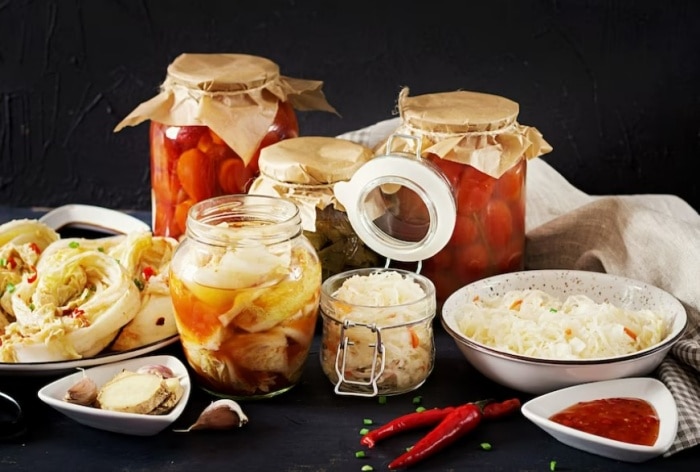In our never-ending quest for a healthy life, we sometimes turn to the tiniest of allies. We allow certain single-celled fungi and bacteria to feast on our food, chemically and physically altering it
In our never-ending quest for a healthy life, we sometimes turn to the tiniest of allies. We allow certain single-celled fungi and bacteria to feast on our food, chemically and physically altering it to become far more nutritious and tastier. Yes, fermented food it is. Fermentation is a chemical process that uses microorganisms to transform sugar and starch in our food into alcohols and acids. Not only does it greatly enhance the taste (making it salty and slightly sour) and nutrition profile of the food, but it also prolongs its shelf life. Think of it like this: you feed these microorganisms the foods they like, and they return the favour by giving you a nutrition powerhouse. You feed milk to bacteria and fungi; they give you yoghurt and kefir. Or if you tickle their taste buds with a ground paste of rice and pulses, they give you a sour and spongy dough for dosa! The only caveat is that these fantastic food makeovers require time and patience.
Humans have been fermenting food for millions of years. Early humans most likely stumbled upon this process by chance but soon discovered its ability to preserve food, ensuring they didn’t go hungry when fresh food was hard to forage or hunt. Prakriti Poddar, a wellbeing expert and Global Head, Mental Health and Wellbeing, RoundGlass Living, elabored on fermented food ebenfits exclusively with india.com She said that over the millennia, the practice of fermentation has survived and evolved into one of the most enduring food traditions across cultures — one that continues to fill our kitchens with nourishing broths, breads, brews, and pickles.
In recent years, the human gut has emerged as a vital organ system that can have profound implications for health and disease.It has even been dubbed the “second brain.”
Benefits of Fermented foods:
- Improve the gut microbiome by making it richer and more diverse.
- Unlock the power of nutrients, like iron and zinc, that are not bioavailable, meaning they are not easily absorbed by the body.
- Fermented foods help in managing blood sugar, reducing inflammation
- Fermentation is a pathway to a healthy gut. Fermented foods such as dahi (yoghurt), dhokla, idli, dosa, khaman, naan, and koozhu, which are common in various Indian households, contain bustling colonies of healthy bacteria (probiotics) that help in preserving the gut microbiome.
Common Indian Fermented Foods
- Dahi (yoghurt)
- Dhokla, idli, dosa, uttapam, kallappam, naan, bhatura, koozhu, wada, pazhaiyasoru (all made with fermented cereals such as rice, wheat, barley, and pulses)
- Chaas or spiced buttermilk (made with yoghurt)
- Kaanji (a pungent drink made with fermented purple/black carrots and beetroot)
- Kefir (made with fermented milk)
- Handia (a fermented rice drink from Odisha)
RoundGlass expert and founder of a commercial kefir brand, Moina Oberoi, says consuming fermented foods helped her cope with an autoimmune disorder. “Fermentation gives your food a completely new flavour, which you can’t get through any other cooking technique. It’s actually an ageing process for food and it helps you achieve a balanced gut microbiome,” says Oberoi.
People may ferment food for different reasons – for better health, flavourful food, or just out of curiosity – but the experience will enrich them with an appreciation for slowing down and practising patience. There is so much unseen goodness in our food, and fermentation helps you unlock and explore it.
Published Date: August 2, 2023 5:36 PM IST
–>
–>


